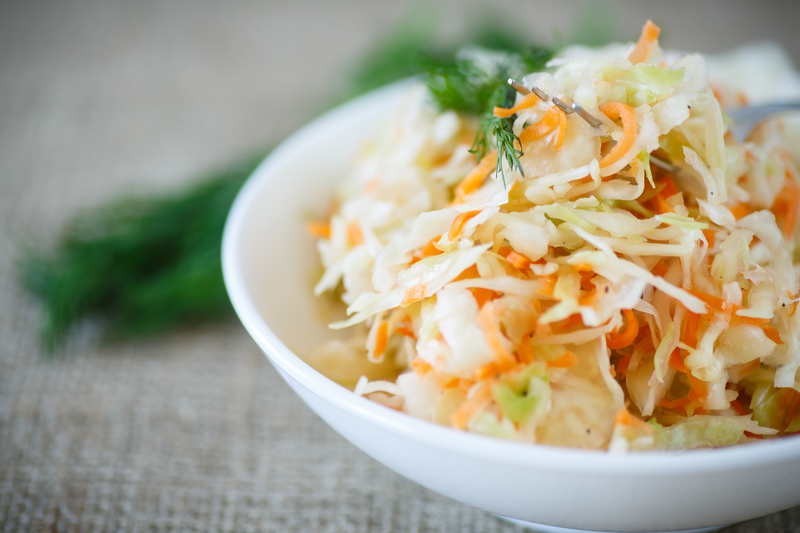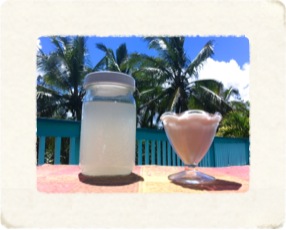Raw Sauerkraut
Ingredients:
- Fermented Vegetables
- Shredded Green Cabbage
- Chunks of Red Onion
- Leeks
- Kale
- Dill
- Parsley
- Chopped Garlic
- Tomato (small amount)
- Sauerkraut or fermentation starter (optional)
- Celery Juice (optional)
Preparation:
- Wash and clean all produce.
- Toss all shredded and/or chopped ingredients in a bowl. Hard veggies such as red cabbage should always be pounded and crushed until soft and juicy. You may choose to add sea salt, which acts as a temporary preservative via crowding out of pathogenic bacteria so that beneficial bacteria can take over. If you are going to use salt, add one teaspoon of sea salt per one pound of cabbage. Do not use iodized table salt. If you don’t want to use salt, juice organic celery as it has naturally occurring sodium that does the same thing.
- Next pack the mixed veggies and/or fruits with optional starter into your chosen container (use glass). If you don’t have a kraut pounder, use a potato masher or ladle to pack the ingredients tight. The goal is to keep the fermenting vegetables in an anaerobic environment (oxygen-free environment). To achieve this push all vegetables under the liquid or make sure all vegetables are covered by the liquid. If you do not have enough brine from pounding the veggies, you may add salt water, cabbage juice, or celery juice.
- Once you have all the vegetables packed into the jar or container, take a cabbage leaf about the size of the mouth of the jar and push it down over the vegetables until the liquid covers the top of the leaf. Tuck the leaf against the edges of the jar to form a seal. If you are using a Harsch crock, leave an inch of brine covering the weight stones. This helps to prevent mold from growing by preventing oxygen from getting to the top of the vegetables.
- You can now seal the jar by twisting on the lid of the mason jar. Don’t tighten it too much, just until it naturally stops turning. This way the carbon dioxide can escape as it builds up.
- Place the jars in a dark place, preferably atop a pan or dish to catch any juice that might bubble or hiss out of the jar as the organisms are breathing. Veggies like to culture anywhere between 68 and 75°F and must stay below 80°F, as heat destroys microbes and takes away from the beneficial, nutritional quality of the food. You don’t have to be so rigid as to use a thermometer… it’s okay to smell/taste check it when you think it might be ready!
- Once it’s fermented, keep your sauerkraut refrigerated to prevent the bacteria from continuing to grow. Each time you remove a serving, use a clean utensil to push the cultured food back down under the liquid. This will help keep fermented veggies from getting mushy or fruit from getting alcoholic over time.
The creative options for fermenting foods are endless!
Read an article on Kitchen Culture: The Art and Science of Fermentation


 Use organic young coconut water, the sweeter the coconut, the better it will ferment. Ideally use unpasteurized coconut water with fresh coconut or from the frozen section at your health food store. If it is pasteurized or not very sweet, add one teaspoon of sugar to one liter of coconut water.
Use organic young coconut water, the sweeter the coconut, the better it will ferment. Ideally use unpasteurized coconut water with fresh coconut or from the frozen section at your health food store. If it is pasteurized or not very sweet, add one teaspoon of sugar to one liter of coconut water.